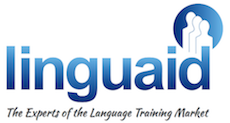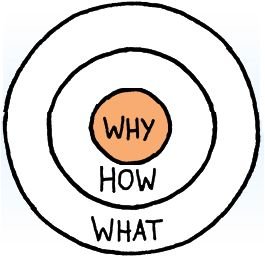Personal branding for your language training business
In the age of the celebrity ELT trainer, personal branding is more important than ever. Here are some tips to help you make your brand shine.
In January, I animated a course for language schools and independent trainers on marketing in Paris and the first part was dedicated to branding.
Branding is the first brick in any marketing campaign. It is quintessentially linked to whom you are and for what you want to be known. In this article, I’d like to take you through some of the elements of what we went through in that course, and how you can apply it to your language training business. It also applies for independent trainers where the brand is you.
Why are you here?
 First of all, you have to establish clearly why you are here. What is your mission? What do you want to accomplish? When you’re sitting on your rocking chair and you’re looking back on your life, what would you like to remember, and be remembered for? When a child asks you, what do you do? Should it be as simple as “I teach English”, or should it go further?
First of all, you have to establish clearly why you are here. What is your mission? What do you want to accomplish? When you’re sitting on your rocking chair and you’re looking back on your life, what would you like to remember, and be remembered for? When a child asks you, what do you do? Should it be as simple as “I teach English”, or should it go further?
These are hard questions, and they might make you feel uncomfortable. They’re supposed to. If you’re unsatisfied with where you are with your teaching business, then it is important for you to determine the reasons why. Money is often a factor, but nobody became an English teacher to earn money anyway, did they?
The “why” is an important concept of what Simon Sinek calls “The Golden Circle”. It is to be put before the “what” and the “how”. “Why do you teach” should always come before “How you teach” which in turn comes before “What you teach”. It is the beginning.
What do you promise?
 A brand is essentially a promise. It’s what you commit to doing to the best of your ability. So if your brand is you, then everything you do as a teacher needs to reflect the professionalism of what any other brand out there promises.
A brand is essentially a promise. It’s what you commit to doing to the best of your ability. So if your brand is you, then everything you do as a teacher needs to reflect the professionalism of what any other brand out there promises.
A good exercise to think about what you promise is through the following questions:
- What do your clients like about you?
- What do they trust you do to?
- How would they compare you to your competitors?
It is through your current activity and how your existing clients see you that you will be able to see what you can promise to your future clients, and adjust your brand accordingly.
Let’s get practical. If you’re a teacher who specialises in business English with executives, and you’re known for being punctual, organised and responsible, then your brand should reflect that. The way you communicate through your logo and the rest of your corporate identity (site, email signature, social media etc.) should have those same traits.
What are your values?
 This is another deep question that I believe is important in marketing because nobody likes to sell or market a product or service that you don’t believe in. You can’t teach English well if you’re teaching the wrong way, to the wrong people and in the wrong conditions.
This is another deep question that I believe is important in marketing because nobody likes to sell or market a product or service that you don’t believe in. You can’t teach English well if you’re teaching the wrong way, to the wrong people and in the wrong conditions.
Thinking about your values (what you stand for, what you believe in) should be in complete coherence with your brand as well. Hopefully this marries well with the qualities that you are known for in the promise you make (see above).
It is easiest to choose just 3 values. It’s not difficult to find values, but it is difficult to choose the ones that you most believe in and that inspire you to work hard every day. Once again, your brand should reflect these values too.
If you’re having difficulty, here is a fun game: which famous celebrity would most reflect your brand
Are you the…
- Richard Branson of ELT?
- George Clooney of ELT?
- Madonna of ELT?
- Meryl Streep of ELT?
How does your choice of celebrity (dead or alive) inspire you, and are the values that you see in this person the same as the ones you try to apply in your business? If so, then there is what I call “coherence”, and it is a lot easier for you to develop your marketing accordingly. It fires the imagination and it makes it easier to envisage the logo, the font and all other aspects of your branding that will stay with you for years to come.
What is the title of your book?
This is a fun game because most ELT trainers adore reading. If you were to write a book about your experiences in ELT, what would the title of your book be? This exercise enables you to understand how you perceive the market, and what you want to share with people, and how you can tell people what you believe in to a wider audience.
What should you do with your branding?
 I think that it is fundamental that if you are branding yourself, then you should accept that people should see your face. By this, I mean that it’s ok to promote your face on your website and in social media. Don’t hide behind a corporate façade. Teaching is about human interaction, and by putting yourself out there, by showing yourself, then potential clients can appreciate just that much quicker who they will be working with.
I think that it is fundamental that if you are branding yourself, then you should accept that people should see your face. By this, I mean that it’s ok to promote your face on your website and in social media. Don’t hide behind a corporate façade. Teaching is about human interaction, and by putting yourself out there, by showing yourself, then potential clients can appreciate just that much quicker who they will be working with.
It’s easy to underestimate the places where your brand should go, and here are a few things you should take into account:
Your logo: obviously your logo is usually the starting place. Often the logo is just the name of the independent teacher but with a nice style of handwriting. It is important to spend a long time on getting the logo right.
Your slogan: this often goes right underneath the logo. For example, Linguaid’s slogan is “The Language Training Market Experts”. Take time to explain in as few as words as possible what you do.
Your headed notepaper: you need headed notepaper that clearly has your logo, the slogan up top, and then at the bottom how to contact you.
Your font: Times New Roman? Calibri? Arial? It seems bizarre, but this is also important. Even the size of the font too. You must look to have consistency in all of your written communications so that the font is the same.
Your email signature: This is a real weakness of independents, and it’s so easy to make a good one. Just go to https://htmlsig.com and use their template there. You can then copy and paste the finished result in your email software.
Logos, fonts, slogans – the whole brand should of course be on your website too. You can easily put your logo and your slogan in any social media you use (but not always the font).
If you can’t design anything yourself and you want to sub-contract, then I would go to www.elance.com and set up a bid for a freelancer to help you. The prices are reasonable and you can easily choose someone who fits your needs.
Conclusion
Whether you are a school or trainer, your brand is something that you must take time to work on because it holds the promise you make to the world about the type of training you want to provide. Think about your values, your qualities, the trust your clients place in you and how your brand can reflect that to people who don’t know you. From there, the design of your corporate identity and how your market yourself should be easier to develop.
This article has been adapted from one published recently in Teaching Times for TESOL. For more tips on how to market your language training, you can sign up to our newsletter.






Very well said, that’s a nice information thanks for sharing this.
Very well said, that’s a nice information thanks for sharing this.
Thank you so much for these. I found your article very informative clearly written.